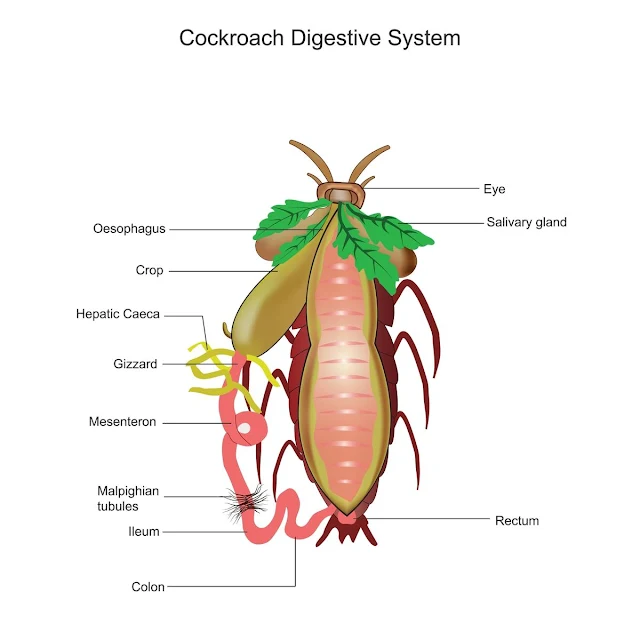The Digestive System of a Cockroach: A Comprehensive Overview
The digestive system of a cockroach is a remarkable biological mechanism that allows these insects to efficiently process their food. As scavengers and omnivores, cockroaches possess a specialized digestive system that enables them to break down a wide variety of organic matter. In this article, we will delve into the intricacies of the digestive system of a cockroach, providing a detailed description along with a labeled diagram to aid comprehension.
The digestive system of a cockroach consists of several organs, each with its own specific function. To better understand this system, let's examine each component in detail:
1. Mouthparts:
At the anterior end of the cockroach, the mouthparts play a crucial role in the ingestion of food. These mouthparts consist of labrum, mandibles, maxillae, and labium. The labrum acts as an upper lip, while the mandibles and maxillae function as chewing and grinding organs. The labium, or lower lip, assists in the manipulation of food during feeding.
2. Salivary Glands:
Located near the mouth, the salivary glands of a cockroach secrete enzymes that initiate the process of digestion. These enzymes, including amylase and protease, break down complex carbohydrates and proteins respectively, converting them into simpler forms for absorption.
3. Esophagus:
The food, once ingested, enters the esophagus. This narrow tube connects the mouth to the crop, which serves as a storage chamber for food.
4. Crop:
The crop is a dilated region of the digestive system that enables the cockroach to store food temporarily. It allows the insect to consume large quantities of food and gradually release it for further digestion.
5. Gizzard:
Beyond the crop lies the gizzard, a muscular organ responsible for grinding the food into smaller particles. Its strong contractions, coupled with the presence of small, hard particles like sand or pebbles, aid in the mechanical breakdown of ingested material.
6. Midgut:
The midgut, also known as the gastric caeca or ventriculus, is the primary site of digestion and nutrient absorption. This section of the digestive system secretes enzymes and acids that further break down food into simpler molecules. The inner lining of the midgut contains numerous finger-like projections called gastric ceca, which increase the surface area for enhanced absorption.
7. Hindgut:
The hindgut is responsible for the final stages of digestion and the absorption of water and minerals. It consists of the ileum, colon, and rectum. The rectum terminates in the anus, through which undigested waste material is excreted.
To visually grasp the intricate arrangement of the cockroach's digestive system, refer to the labeled diagram provided alongside this article.
The digestive system of a cockroach, with its well-coordinated organs, ensures efficient food processing and nutrient absorption. By employing both mechanical and chemical means of digestion, cockroaches can derive sustenance from a wide range of food sources. This adaptability is one of the reasons behind their remarkable survival and proliferation.
In conclusion, the digestive system of a cockroach is a complex network of organs working in harmony to process and extract nutrients from ingested food. Understanding the functioning of this system provides valuable insights into the remarkable adaptations of these resilient insects.
